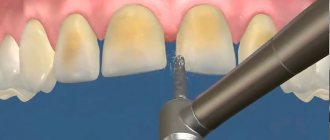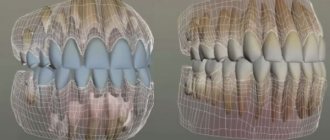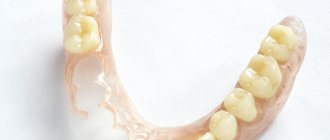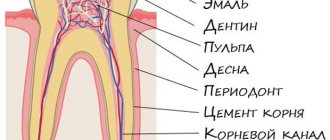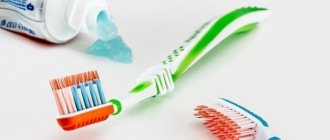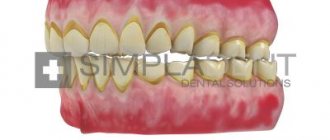When asked how many teeth an adult should have, everyone will answer without delay: the norm is 32 teeth. But if you take the topic seriously and count the number of teeth on the upper and lower jaw, you may be surprised, since there will be fewer than the expected number. Let's try to find out why this happens, which cases can be considered normal, and which require medical intervention.
Why do we need baby teeth?
It's no secret that baby teeth perform their function for an average of 10 years, after which they are replaced by molars. If we compare this figure with the average human life expectancy, it turns out that we spend almost all our time with molars. What then is the function of baby teeth? Generally speaking, baby teeth are one of the main components of the proper development of the facial skeleton. As for the details, they are presented below.
- Milk teeth provide chewing load.
The bone tissue of the jaw is formed only under the influence of mechanical pressure. Milk teeth provide the necessary load, thanks to which the harmonious development of bone tissue and jaw bones occurs. - They form a bite.
If a child’s primary bite has any abnormalities, this will inevitably affect the permanent teeth in the future. That is why it is recommended to regularly show the child to the orthodontist until the complete change of the dentition. - They are the “progenitors” of molars.
The rudiments of molars are formed under the temporary teeth, and the milk teeth are a kind of navigators that determine the place of the permanent ones. A correctly formed row of baby teeth means that molars are likely to appear in their place. - Participate in the formation of diction.
Milk teeth are part of the speech apparatus and are directly related to the reproduction of sounds.
How important is sexual intimacy?
If we summarize the results of numerous studies, sex is almost a cure for all diseases. We have already talked about the benefits of masturbation. The benefits of intimacy with a partner are the same, provided that you get an orgasm from her.
In a relationship, intimacy is important not only for sensual pleasure and your health. Sex creates a strong emotional connection in a couple.
Intimacy and connection are a human need, explains New York-based clinical psychologist Dr. Sanam Hafeez. — In long-term relationships, people reunite through sex. Substances that are released into the brain during sexual intercourse enhance the bond between couples.
This only happens if both partners enjoy sex. For an emotional connection, it is not so much the sexual act itself that is important, but physical intimacy - touching, hugging, as well as frankness about your preferences and erotic fantasies.
Milk and molar teeth: what are their differences?
Externally, baby teeth and molars are very similar, but if you look closely, you will notice some visual differences: baby teeth are smaller in size, and the incisors and canines have a more rounded shape. The main differences are related to anatomy and structure.
- Primary teeth have thinner enamel with less mineralization.
- The root canals of baby teeth are much wider and, accordingly, more susceptible to the entry of pathogenic bacteria.
- The dentin layer of baby teeth is thinner, and the pulp is thicker.
- Milk teeth have roots, but they are less pronounced and dissolve during the process of changing the dentition.
When do baby teeth appear?
The formation of a child’s teeth begins in the womb: this is partly why doctors recommend that pregnant women eat foods rich in calcium and other beneficial minerals. After birth, the first baby tooth (in the vast majority of cases, this is the lower incisor) appears when the baby is six months old. There are cases when the first teeth erupt already in the third month, and sometimes a child is already born with one or more teeth (among many peoples this is considered a lucky sign). Conversely, some children acquire their first teeth after reaching one year of age. Below you can see a table that shows the current timing of the appearance of baby teeth.
Milk teeth on the lower jaw
| Name of teeth | Age of appearance |
| Central incisors | 6 – 9 months |
| Lateral incisors | 10 – 14 months |
| Fangs | 17 – 21 months |
| Premolars | 13 – 16 months |
| Molars | 23 – 30 months |
Milk teeth on the upper jaw
| Name of teeth | Age of appearance |
| Central incisors | 8 – 11 months |
| Lateral incisors | 9 – 12 months |
| Fangs | 16 - 19 months |
| Premolars | 13 – 16 months |
| Molars | 25 – 32 months |
Disorders during the eruption of primary teeth
The most common timing for the eruption of baby teeth is listed above. It is optimal when, upon reaching the age of three, the child has a full set of primary teeth. If baby teeth erupt late, experts advise parents not to worry unnecessarily: a delay of 2 to 3 months is considered normal. If after this period the teeth do not appear, then you should consult a doctor who will examine the child’s oral cavity, take tests and take panoramic photographs of the jaw, after which it will be possible to draw certain conclusions about the reasons for this delay. This usually occurs due to a lack of minerals and vitamins, which is easily solved with the help of restorative therapy. It is much worse when the rudiments of baby teeth are simply absent. This occurs extremely rarely and is usually caused by genetic abnormalities, periodontal inflammation and mechanical damage. In this case, to properly distribute the chewing load and develop the jaw bones, it is necessary to wear a removable denture.
When do baby teeth fall out?
“Childhood is over,” some parents say to their children whose baby teeth have been replaced by molars. Of course, this statement is mostly in a humorous form, since the average age when a child’s dentition ends is 12 years. At this time, the time of adolescence begins - one of the most interesting and eventful periods of our lives. As is the case with the eruption of baby teeth, their loss does not have a clear age limit. For example, today dentists are increasingly noting the early appearance of a full set of molars (as early as 10–11 years), whereas 20–30 years ago this could occur in adolescence (at 14–15 years). The service life of each baby tooth is on average 3-4 years: before the process of changing the dentition begins, the roots of the baby teeth are absorbed, so their loss does not bring severe pain and discomfort to children. Below is a table with the approximate timing of the loss of different groups of baby teeth.
Milk teeth on the lower jaw
| Name of teeth | Drop time |
| Central incisors | 5 - 6 years |
| Lateral incisors | 7 - 8 years |
| Fangs | 9 - 10 years |
| Premolars | 10 - 11 years |
| Molars | 11 - 12 years |
Milk teeth on the upper jaw
| Name of teeth | Drop time |
| Central incisors | 7 - 8 years |
| Lateral incisors | 8 - 9 years |
| Fangs | 10 - 11 years |
| Premolars | 11 - 12 years |
| Molars | 12 - 13 years old |
**Note: The first molar becomes the sixth molar, which does not have a primary tooth and erupts on its own at the back of the jaw.
Second upper premolar
Average age of teething: 10-12 years
Average age of root formation: 12-14 years
Average length: 21.5 mm
Similar to the first premolar in crown shape, the second premolar differs mainly in its root shape. Its crown is narrower in the bucco-palatal direction and somewhat wider in the mesial-distal direction. The mouth of the canal is located in the center, but it is more slit-like than oval. In the presence of a slit-like orifice, the physician should assume the presence of two canals until proven otherwise.
The external shape of the tooth is slightly oval, but wider in the mesial-distal direction than that of the first premolar.
All infected dentin and leaking fillings should be removed and replaced with temporary fillings.
The root may have two separate channels connecting into one, or two channels interconnecting in the form of a “web”. Accessory or lateral canals are possible but are less common than in incisors. Vertucci et al found that 75% of upper second premolars had one foramen at the apex, 24% had two foramina, and 1% had three foramina. Of all the teeth studied, 59.5% had additional canals. These investigators reported that when two canals are joined into one, the palatine canal is often directed toward the apex in a straight line. They further stated that “if, on a direct periapical photograph, the root canal sharply narrows or even disappears, this means that at this point it is divided into two canals, which either remain separate (type V) or, before reaching the apex, merge again (type II)".
The length of the root of the second upper molar is comparable to that of the first premolar. Apical bending is common, especially with a large volume of the maxillary sinus.
To prevent vertical coronal or crown-root fractures after endodontic treatment, complete closure of the occlusal access cavity is necessary.
Problems with changing teeth
As with the eruption of baby teeth, molars can also be difficult to erupt. Sometimes the crown part of the tooth does not appear completely or is completely hidden in the soft tissues. This situation is usually called retention: it can be caused by improper or too deep seating of the germ, as well as late loss of a baby tooth in its place. Just as in the case of baby teeth, a child may have no molar rudiments at all: this happens due to metabolic disorders, insufficient mineralization or damage to the rudiments at the intrauterine stage of development. This can also occur when infections and inflammations are transferred from baby teeth and in some other individual situations. This problem can only be corrected by prosthetics or implantation after reaching adulthood.
Gum recession
Gum recession is a decrease in gum volume and exposure of the neck and root of the tooth. This leads to aesthetic problems and more serious diseases, for example, increased sensitivity of the enamel, root caries, wedge-shaped defects, and in advanced cases, tooth extraction.
In young and middle-aged people, as a rule, recession is associated with malocclusion or the absence of several teeth and, as a result, overload of the remaining ones.
In older people, the cause is natural – periodontal aging. In this case, the exposure of the roots is clearly visible, and the teeth remain stable.
After 45 years, gum recession occurs in almost every patient.
Milk teeth in adults: when childhood drags on
Yes, this happens, but very rarely. In dentistry, there are cases where baby teeth were found in thirty-year-old and even fifty-year-old people: doctors call such teeth persistent. What is the reason for such dental infantilism? This happens precisely for the reason that we talked about above. When a person lacks the rudiments of permanent teeth, the replacement mechanism does not start. Simply put, nothing puts pressure on the roots of baby teeth, which is why they do not dissolve, but remain in the oral cavity of an adult. It also happens that the rudiments of the molars are located too deep and also do not come into contact with the roots of the milk teeth. Treatment here is purely individual. If a person has a healthy baby tooth with intact roots, under which there is no molar rudiment, it makes sense to have it replaced with a veneer or crown in order to protect it from the external environment and give it the desired shape. If the baby tooth is unstable and its roots are resorbed, extraction is recommended. If there is a permanent tooth germ underneath, then it is “pulled” out; if not, a prosthesis is installed.
Special Forces Methodology
Having mastered the special forces technique, you can learn to fall asleep in any conditions in 2 minutes.
Her rules:
- Lean back in a chair or lie down on the bed. Legs should be parallel.
- Cross your arms over your chest. Place your chin on your chest. Relax your jaw and let it drop freely.
- Breathing should be deep and calm.
- Alternately relax the muscles of the head, tongue, lips, eyes.
- With each exhalation, release tension and unnecessary thoughts.
- Relax your arms and legs; they should resemble “dead weight.”
- Mentally imagine virgin nature, calming the mind.
Do baby teeth need to be treated?
If you have carefully read the article up to this point, then you should have no doubts. Baby teeth must be treated, since they are directly involved in the formation of the bite and the appearance of permanent teeth. If baby teeth are not treated and cared for properly, there is a high risk of early loss. The enamel of baby teeth is thin; it quickly succumbs to the pressure of carious bacteria and the destructive effects of the external environment. Moreover, the inflammatory process, having penetrated into the depths of a baby tooth, can damage the rudiments of a molar, and then you will lose not one, but two teeth at once. Monitoring the child’s hygiene and regularly taking him for preventive examinations is the task of every parent.
